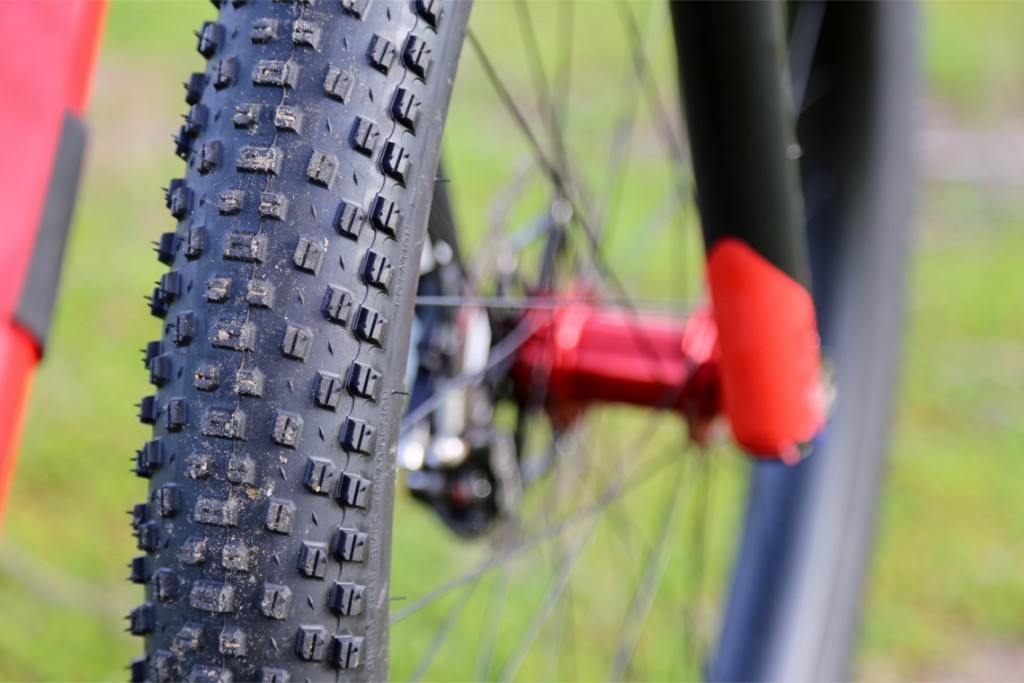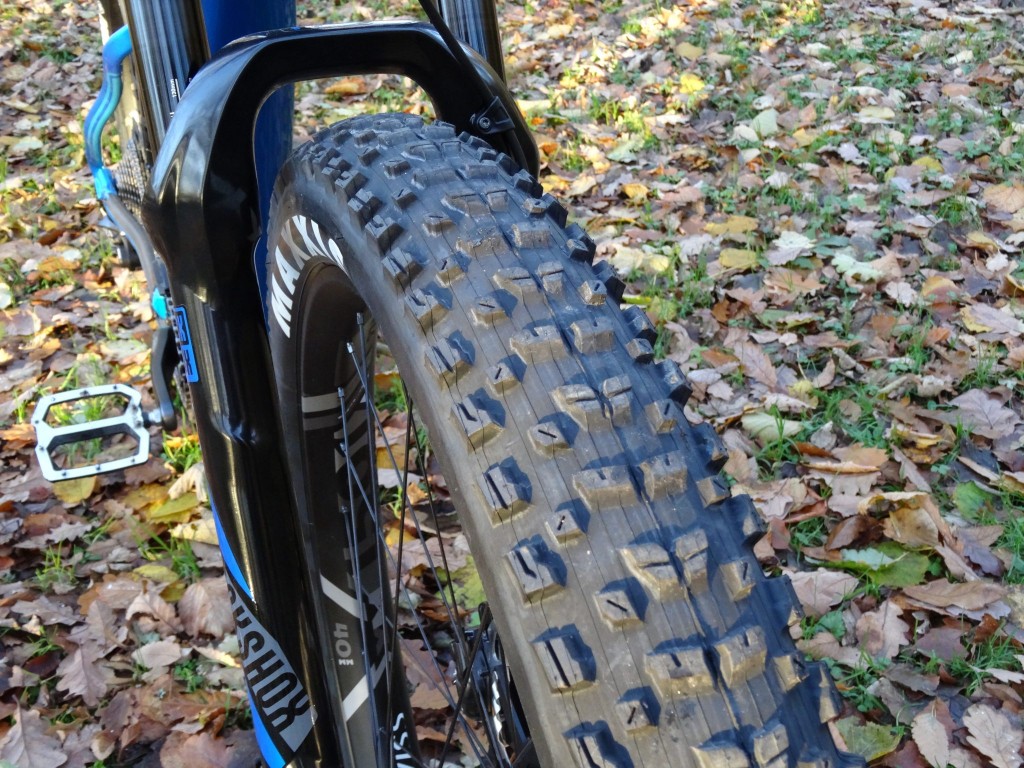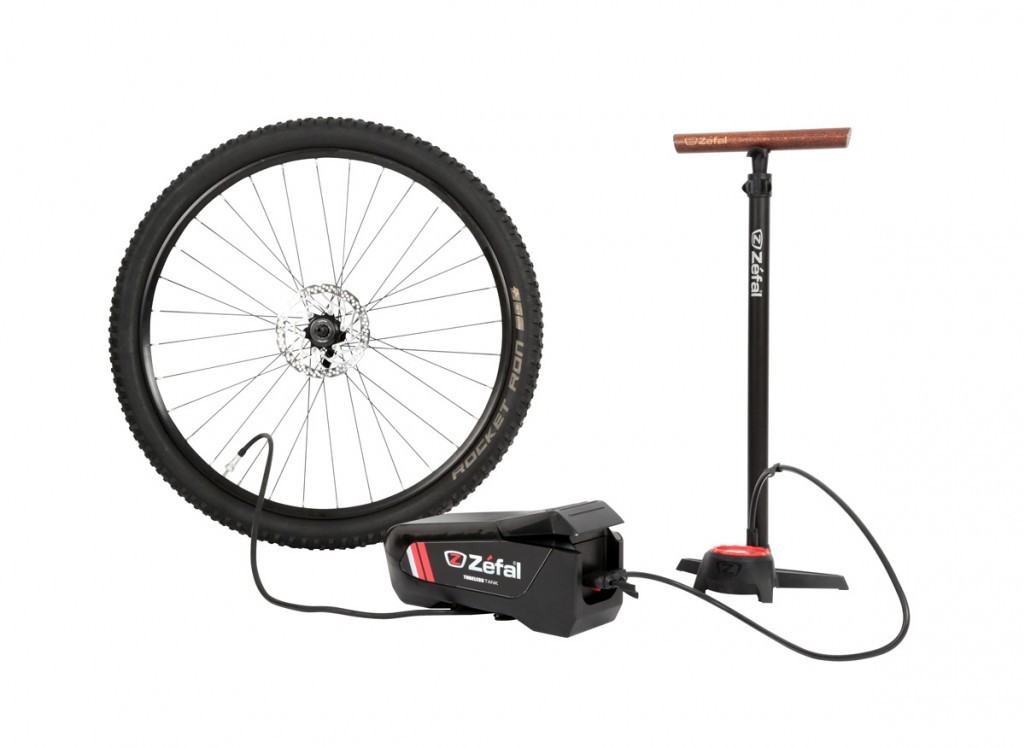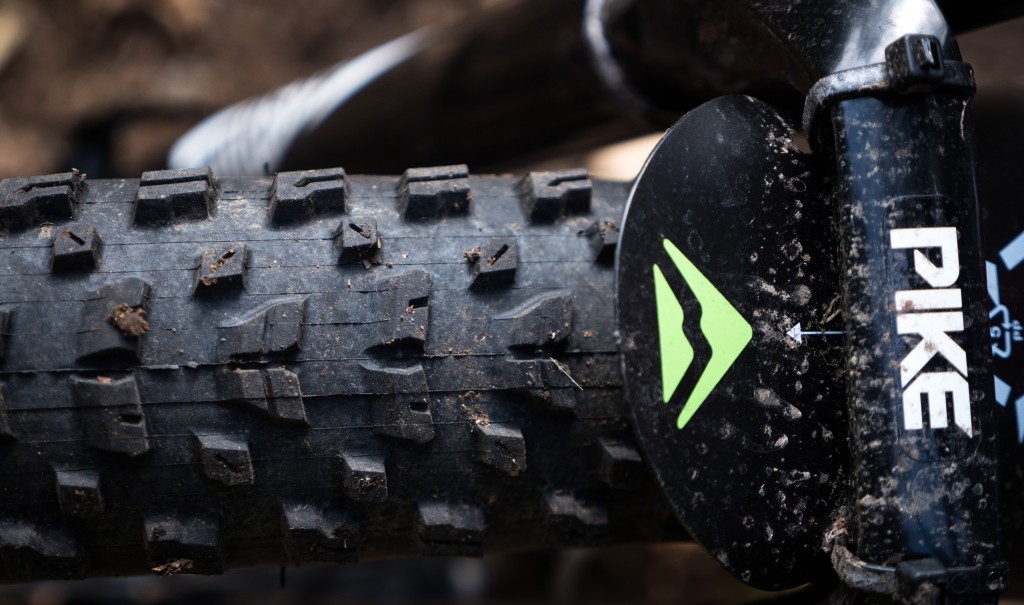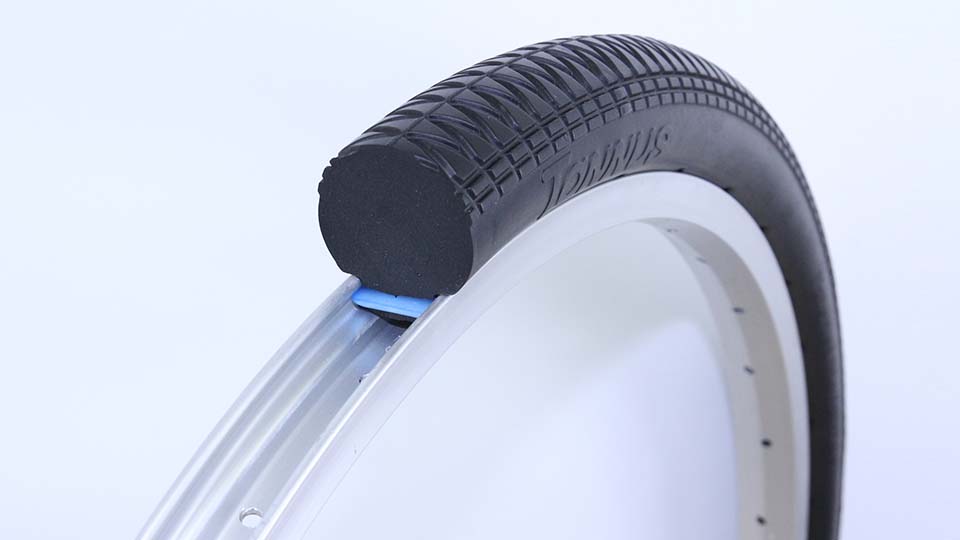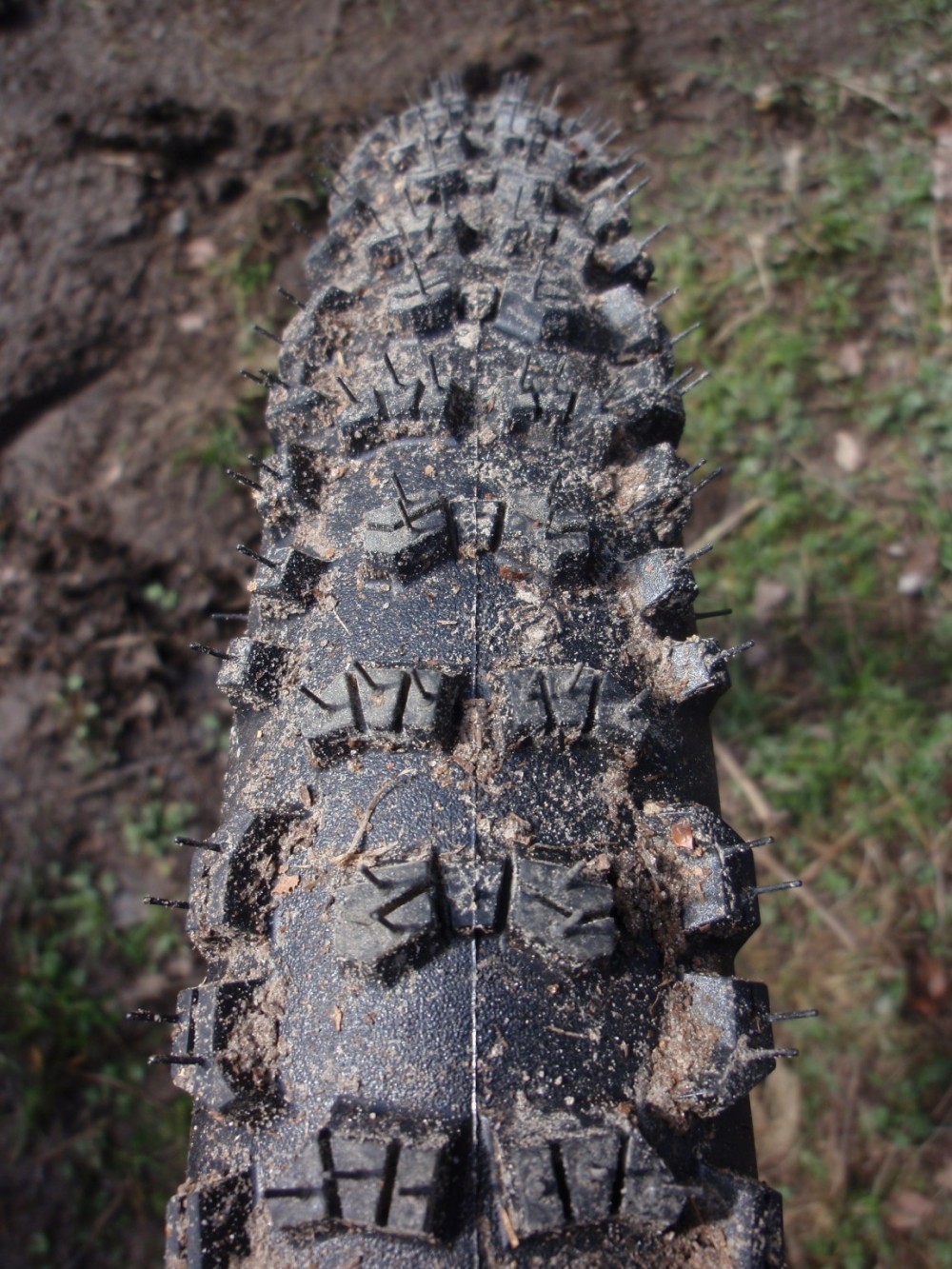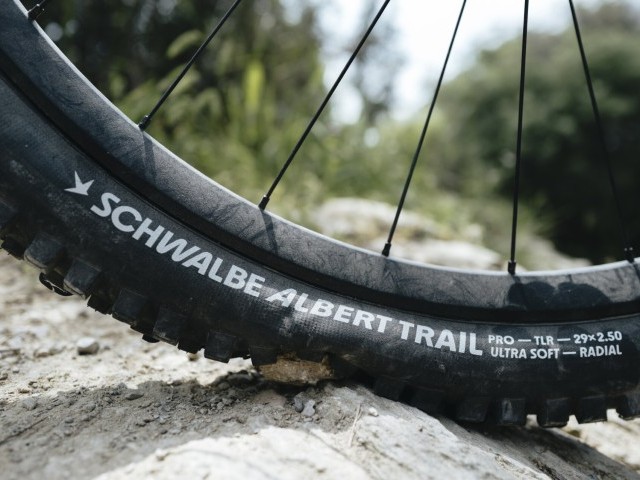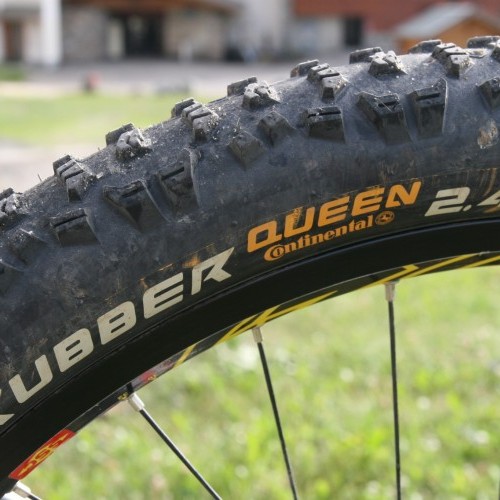
Preparing For Re-Tyrement: An MTB Tyre Guide
Features / Sat 22nd Apr, 2017 @ 3:30 am
So you need a new set of bike tyres, eh? But what are all of those numbers and names, which is the best mountain bike tyre for the job, why so many to choose from, and why are they called ‘tires’ in the US? To help you answer these questions we take a look at what you need to know when choosing your next set of rubber. Prepare to get a grip.
Often overlooked as a component of significance, tyres perform one of the most important duties on a mountain bike, providing both the grip required for successful turning and traction between bike and ground for effective propulsion.
So often our tyres are taken for granted and stock rubber is run continually all year round, no matter the conditions of the earth we’re riding on. Yet there are so many tyre options out there that knowing what type to run on your wheels – and when – can be a bit overwhelming. There are a vast number of MTB tyres available on the market today, especially considering the need to cater for the many different wheel sizes we’ve seen crop up in the past few years.
Seasonal Factors And Tread Patterns
Whether through laziness or a lack of understanding most of us will stick with the tyres that arrive stock on our bike. For the most part this is totally fine with many manufacturers specifying great all-round tyres offering a good mix of grip, width and rubber type ready for any variety of terrain and weather.
Consider though that there are a great many weather types across the world and even more terrain types, with many variations of mud, dirt and even snow to contend with. So it’s no surprise then that there are an equally baffling number of tread patterns to suit these many instances.
An open, well spaced pattern of tall lugs will offer the best level of mud shedding in order to keep your tyres from clogging up and losing grip, while for harder ground (or hot weather use) a tighter, lower profile of lugs will give a fast rolling tyre with ample grip for hard packed surfaces.
Common tread configurations feature a tightly packed pattern of lugs along the centreline for straight line speed, with spaced lugs along the shoulders of the tyre to aid with cornering. Shoulder lugs are typically spaced further apart to promote mud shedding – you don’t want to be leaning over into a corner on slick tyres!
Tyre Casings
The tyre’s casing is the thing which provides it with its strength. Tyres are made up of several layers: the outer layer consisting of the rubber tread and sidewall; the bead, which holds the tyre in place against the wheel rim; and sometimes a puncture-proof layer between the tread and casing layers.
Tyre casings are typically made from a nylon weave wrapped from one bead to the other, though some mountain biking disciplines feature reinforced (or multi-layered) casings, for example in downhill MTB, where reinforced sidewalls and overall tyre strength are required to cope with the demands of the terrain and riding style.
Tyre Compounds
Tyre compounds (that is, the ‘blend’ of rubber types used in the make up of your tyre) vary greatly, even within tyres of the same brand and model. Depending on the type of terrain you’ll be riding you’ll want to match up the compound with the trail. For example, if you’re going to be riding on greasy, wet rocks and roots then you’ll want a softer rubber compound to provide you with more grip. Be aware though that the softer the rubber the faster the tyre will wear – think Formula 1 ‘wet’ tyres getting shredded on a dry race track, for example.
Equally, for drier and more aggressive terrain a harder rubber compound is recommended to improve the lifespan of your tyres, as the tread pattern alone (plus your riding skill and prowess) should be enough to provide ample grip. While you may still feel the benefit of softer tyres on tougher trails you’ll no doubt see the tyres begin to deteriorate, losing lugs and beginning to appear fuzzy, perhaps even puncturing on sharp, slatey rocks. The last thing you want is to lose faith in your contact points!
A few mountain bike tyres offer dual compounds, providing the best of both worlds, with a harder rubber mix used along the centre line for less rolling resistance and improved longevity, and a softer blend used along the sides and edges to improve traction and grip whilst cornering.
As a rule of thumb:
– Hard rubber compounds are best for speed and longevity, i.e. XC and road tyres.
– Dual or intermediate compounds offer a balance of speed, grip and longevity, i.e. general mountain biking
– Soft rubber compounds offer the best levels of grip and comfort, i.e. DH and enduro racing
Tyre Bead Types
The bead is situated on the edge of the tyre and is what attaches your rubber to the wheel rim. There are two common types of bead: steel and folding.
Steel beaded tyres are most commonly found on bikes at the lower end of the budget spectrum as they are usually cheaper, heavier and do not fold down for transport. Such tyres are usually designed to stand up to abuse from tyre levers, however.
Folding bead tyres are found on all mid to high end mountain bikes and offer a range of benefits such as lighter weight (they don’t have steel wires running through them) and ‘packability’, making it easier to carry a spare. They are also often easier to handle on and off the rim when changing tyres…but not always!
Tyre Width
While tyre width may be dictated by your type of riding, i.e. whether you’re into XC (skinnier tyres) or DH (wider tyres), there are still considerations to make within each riding style.
A wider tyre (2.2 inches and above) will offer a larger contact point with the ground, providing improved grip, comfort, damping and confidence through corners, while a narrower tyre (1.8 to 2.1 inches) will often roll faster – for higher speeds – and cut through wet ground and mud to find traction.
Running wider tyres on your bike also requires some consideration of frame clearances, as a muddy wide tyre may fail to pass easily between the seat and chain stays of your bike frame, potentially slowing you down and causing damage to the frame. Be aware also that not all tyre widths necessarily fit to all rim widths, particularly if you’re trying to run a new set of tyres on an older set of rims.
It’s worth noting that together with a heap of recent changes to wheel size standards (27.5 inches and 29 inches), there are also now a bucket load of new tyre width standards, such as Plus (around 2.8 to 3.25 inches) and Fat (3.8 to 5 inches wide). Best to check these before parting with your hard earned also!
Tyre Weight
Often overlooked as being a negative feature a heavier tyre weight can have its own benefits, for instance when a tougher, more robust tyre is required for riding on aggressive terrain, such as in downhill mountain biking. Further to this the increased weight can help improve the gyroscopic effect of the wheel, as the mass helps to rotate the wheel and adds further stability to your ride, whether you’re on the ground or up in the air.
Clearly a lower tyre weight will help with your personal endurance and ability to keep turning the pedals, as a heavier tyre will always require more effort to rotate.
Tube Vs Tubeless Tyres
Traditionally MTB tyres have been filled and supported by rubber inner tubes, which have their benefits in so far as cost, familiarity and ease of use (usually!) go. It’s still a great idea to carry one in your pack should your tubeless set up come unstuck and lose pressure.
Tubeless tyre systems have come a long way in the relatively short amount of time they’ve been around for and are becoming easier and faster to use thanks to improved sealant compounds and fitting kits. The primary benefits of a tubeless tyre are a decrease in weight (rotating mass) due to the lack of an inner tube, an increase in ‘feel’ and grip due to the ability to run lower pressures without fear of pinch flats, and – perhaps most importantly of all – their ability to instantly re-seal and carry on working after a puncture.
Take a look at our handy guide to going tubeless in 10 minutes for help getting started.
Overall
Tyre choice is a very personal and end-use-specific subject then, and some time should be spent researching what tyre type, size, compound and weight is best for your bike, style of riding and the places you’re going to ride.
We hope you’ve found this tyre guide useful but, as always, please feel free to drop us a comment below with any questions or feedback you might have.
By James Swann
Originally from Sheffield, James lives and works in the mountain bike mecca that is the Lake District and has been falling off bikes since he was six. In between working on bike events, riding bikes, racing bikes and writing about bikes he enjoys talking about bikes with anyone who will listen. He really likes bikes.

